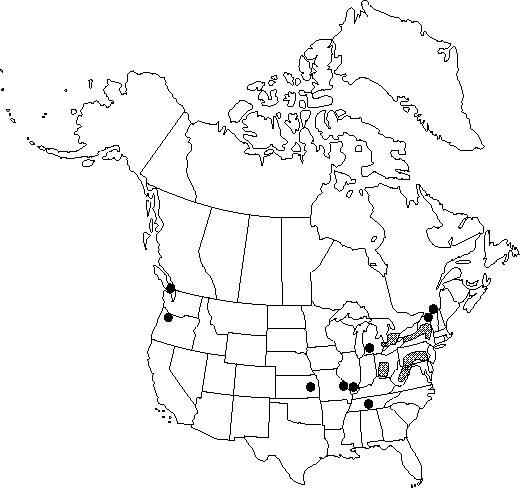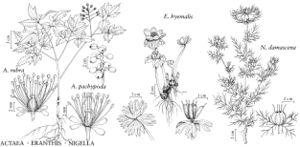Difference between revisions of "Nigella damascena"
Sp. Pl. 1: 534. 1753.
FNA>Volume Importer |
FNA>Volume Importer |
||
| Line 56: | Line 56: | ||
|publication year=1753 | |publication year=1753 | ||
|special status=Selected by author to be illustrated;Introduced | |special status=Selected by author to be illustrated;Introduced | ||
| − | |source xml=https://jpend@bitbucket.org/aafc-mbb/fna-data-curation.git/src/ | + | |source xml=https://jpend@bitbucket.org/aafc-mbb/fna-data-curation.git/src/f6b125a955440c0872999024f038d74684f65921/coarse_grained_fna_xml/V3/V3_205.xml |
|genus=Nigella | |genus=Nigella | ||
|species=Nigella damascena | |species=Nigella damascena | ||
Revision as of 19:52, 24 September 2019
Stems erect, slender, 10-75 cm, glabrous. Leaves 2-16 cm; basal leaves petiolate, segments wider than ±sessile cauline leaves. Inflorescences: involucral bracts whorled, similar to cauline leaves, curving up to surround flower. Flowers 10-50(-60) mm diam.; sepals blue, sometimes pink or white, short-clawed, 8-25 × 3-15 mm, apex entire to irregularly incised or lobed, occasionally lacerate; petals clawed, abaxial lip distally 2-lobed, bearing 2-3 nectar glands or apex expanded, adaxial lip scalelike. Capsules smooth, 8-35 mm; locules 5-10; beak persistent, slender.
Phenology: Flowering late spring–early fall.
Habitat: Dump sites and waste places
Elevation: 0-400 m
Distribution

B.C., Ont., Que., Ill., Kans., Md., Mich., Mo., N.Y., Ohio, Oreg., Pa., Tenn., W.Va., native to Eurasia.
Discussion
Nigella damascena is frequently cultivated as an ornamental and for dried-flower arrangements. It occasionally escapes cultivation and may become established. Populations in Ontario and Quebec, and probably elsewhere, are short-lived.
Most North American populations of Nigella damascena are represented by a mixture of single- and double-flowered (having supernumerary flower parts) individuals. Sepals tend to be larger and more variable in color than in Eurasian plants. Single-flowered plants usually have petals; petals appear to be absent in double-flowered individuals.
Selected References
None.
